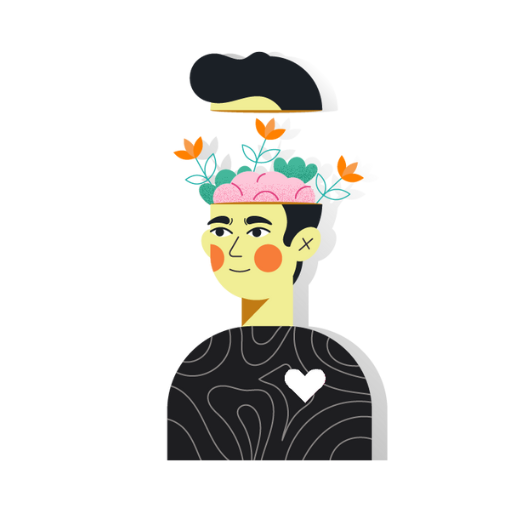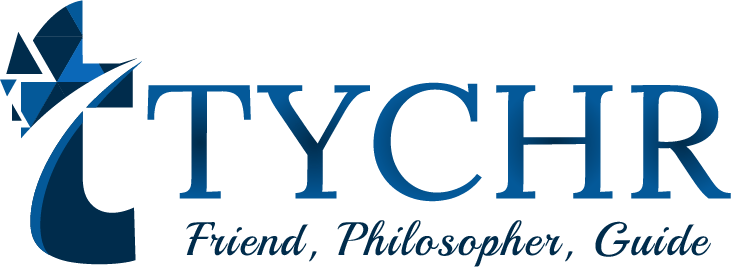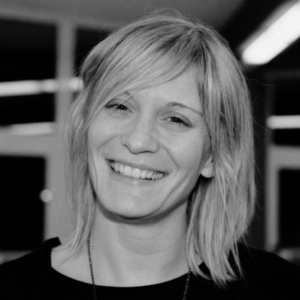IB Biology HL Paper 2 Question Bank
The IB Biology HL Paper 2 Question Bank is a great resource for students preparing for their IB Biology HL exams. The question bank contains a wealth of questions, covering all the topics in the IB Biology HL syllabus. This makes it an invaluable resource for students who want to make sure they are fully prepared for their exams. Overall, the IB Biology HL Paper 2 Question Bank is an excellent resource for any student taking their IB Biology HL exams.
Biology Higher Level Paper 2
Time: 2 hours and 15 minutes
Instructions to candidates
- Do not open this examination paper until instructed to do so.
- Section A: answer all questions.
- Section B: answer two questions.
- Answers must be written within the answer boxes provided.
- A calculator is required for this paper.
- The maximum mark for this examination paper is [72 marks].
SECTION: A
Answer all questions.
1.) It had always been assumed that eukaryotic genes were similar in organisation to prokaryotic genes. However, modern techniques of molecular analyses indicate that there are additional DNA sequences lying within the coding region of genes. Exons are the DNA sequences that code for proteins while introns are the intervening sequences that have to be removed. The graph shows the number of exons found in genes for three different groups of eukaryotes.
A) Calculate the percentage of genes that have five or fewer exons in mammals.
47–49%
B) Describe the distribution of the number of exons and the percentage of genes in D. melanogaster.
Drosophila has a few genes with one exon. The highest percentage has 2 exons;
C) (i) Compare the distributions of the number of exons found in genes of S. cerevisiae and in mammals.
Yeast has the most genes with only 1 exon, while for mammals 5 exons is most frequent;
(ii) Suggest one reason for the differences in the numbers of exons found in genes of S. cerevisiae and in mammals.
Yeast is a unicellular organism, whereas mammals are multicellular
2.) A group of researchers conducted an experiment to investigate the impact of different fertilizers on plant growth. They randomly assigned 100 tomato plants to four different groups: control (no fertilizer), organic fertilizer, inorganic fertilizer, and a combination of organic and inorganic fertilizers. After six weeks, they measured the height and weight of the plants. The results are shown in the table below:
Fertilizer Group | Mean Height (cm) | Mean Weight (g) |
Control | 23.4 | 14.2 |
Organic | 31.8 | 19.1 |
Inorganic | 27.5 | 16.5 |
Organic + Inorganic | 34.6 | 22.5 |
A) What is the independent variable in this study? What is the dependent variable?
The independent variable is the type of fertilizer used (control, organic, inorganic, or organic + inorganic). The dependent variables are the height and weight of the tomato plants.
B) Calculate the mean and standard deviation of the height and weight for each group.
Fertilizer Group | Mean Height (cm) | Standard Deviation Height (cm) | Mean Weight (g) | Standard Deviation Weight (g) |
Control | 23.4 | 3.2 | 14.2 | 2.1 |
Organic | 31.8 | 2.9 | 19.1 | 1.8 |
Inorganic | 27.5 | 2.5 | 16.5 | 1.5 |
Organic + Inorganic | 34.6 | 3.1 | 22.5 | 2.0 |
C) Based on the data in the table, what can you conclude about the impact of the different fertilizers on plant growth?
The tomato plants that received the organic + inorganic fertilizer had the highest mean height and weight, followed by the organic fertilizer group, the inorganic fertilizer group, and the control group. This suggests that the use of fertilizers, particularly a combination of organic and inorganic fertilizers, can have a positive impact on plant growth.
D) Describe a potential source of error or bias in this study, and suggest a modification that could be made to overcome this issue.
A potential source of bias in this study is the lack of control over environmental factors such as temperature, light, and water. To overcome this issue, the study could be repeated with the use of controlled environmental conditions, such as a greenhouse or growth chamber, to ensure that all plants are exposed to the same conditions.
3.) A group of researchers conducted a study to investigate the effects of exercise on blood pressure in a group of 50 individuals. They measured the resting blood pressure of each participant and then randomly assigned them to one of two groups: exercise or control. The exercise group participated in a moderate-intensity aerobic exercise program for eight weeks, while the control group did not change their activity level. The researchers then measured the blood pressure of each participant again. The results are shown in the table below:
Group | Mean Resting Blood Pressure (mmHg) | Mean Blood Pressure After 8 Weeks (mmHg) |
Control | 121.4 | 119.5 |
Exercise | 124.1 | 114.3 |
A) Calculate the mean and standard deviation of the resting blood pressure and the blood pressure after 8 weeks for each group.
- Control group mean resting blood pressure: 121.4 mmHg
- Exercise group mean resting blood pressure: 124.1 mmHg
- Control group mean blood pressure after 8 weeks: 119.5 mmHg
- Exercise group mean blood pressure after 8 weeks: 114.3 mmHg
- Control group standard deviation of resting blood pressure: not given
- Exercise group standard deviation of resting blood pressure: not given
- Control group standard deviation of blood pressure after 8 weeks: not given
- Exercise group standard deviation of blood pressure after 8 weeks: not given
B) Based on the data in the table, what can you conclude about the effects of exercise on blood pressure?
Based on the data in the table, it appears that the exercise group had a greater reduction in blood pressure after 8 weeks compared to the control group. The mean blood pressure after 8 weeks for the exercise group was lower than the control group (114.3 mmHg vs. 119.5 mmHg). However, we cannot conclude that this difference is statistically significant without additional analysis.
C) Describe a potential source of error or bias in this study, and suggest a modification that could be made to overcome this issue.
A potential source of bias in this study is the lack of blinding. Participants in the exercise group may have been more motivated to lower their blood pressure, which could have influenced the results. To overcome this issue, the researchers could have used a double-blind study design where neither the participants nor the researchers knew which group each participant was in.
D) Explain how the results of this study could be used to develop recommendations for individuals looking to reduce their blood pressure through exercise.
The results of this study suggest that moderate-intensity aerobic exercise may be an effective way to lower blood pressure. Individuals looking to reduce their blood pressure through exercise may benefit from incorporating a moderate-intensity aerobic exercise program into their routine. However, it is important to note that individual results may vary, and it is always recommended to consult with a healthcare professional before beginning any exercise program.
4.) A group of researchers conducted a study to investigate the impact of natural selection on the frequency of an allele associated with disease resistance in a population of deer mice. They collected genetic samples from two populations of deer mice: one in a grassy area and one in a forested area. They then genotyped each mouse for a single-nucleotide polymorphism (SNP) associated with disease resistance. The results are shown in the table below:
Population | Frequency of Disease-Resistant Allele |
Grassy Area | 0.24 |
Forested Area | 0.12 |
A) What is the independent variable in this study? What is the dependent variable?
The independent variable in this study is the type of population (grassy area vs. forested area), while the dependent variable is the frequency of the disease-resistant allele.
B) Based on the data in the table, which population appears to have stronger selection pressure for the disease-resistant allele? Explain your answer.
The population in the grassy area appears to have stronger selection pressure for the disease-resistant allele, as its frequency is higher than in the forested area. This suggests that individuals with this allele may have a higher chance of survival and reproductive success in the grassy area, possibly due to exposure to disease-causing agents.
C) Describe one potential limitation of using SNP data to investigate the effects of natural selection on allele frequency.
One potential limitation of using SNP data to investigate the effects of natural selection on allele frequency is that it provides information on only a single genetic locus, which may not accurately represent the entire genome. In addition, SNP data alone cannot determine the specific selective pressures driving changes in allele frequency.
D) Explain how the results of this study could be used to inform conservation efforts for deer mice populations.
The results of this study could be used to inform conservation efforts for deer mice populations by highlighting the potential impact of environmental factors on allele frequency and genetic diversity. For example, conservation efforts could focus on preserving habitats that provide the most favorable conditions for maintaining genetic diversity and disease resistance in deer mice populations. In addition, management strategies could be developed to promote gene flow between populations to prevent genetic drift and loss of adaptive traits.
5.) A group of researchers conducted an experiment to investigate the effect of pH on the activity of the enzyme amylase. They added equal amounts of amylase and starch to six test tubes and adjusted the pH of each tube to a different value: 3, 4, 5, 6, 7, and 8. They then incubated the tubes at 37°C for 10 minutes and measured the amount of glucose produced using a colorimetric assay. Answer the following questions.
A) What is the independent variable in this study? What is the dependent variable?
The independent variable in this study is pH, and the dependent variable is the activity of the enzyme amylase, measured by the amount of glucose produced.
B) At what pH does amylase show the highest activity? At what pH does it show the lowest activity?
Amylase shows the highest activity at a pH of 7, and the lowest activity at a pH of 3.
C) Explain why enzymes are affected by changes in pH.
Enzymes are proteins that are folded into complex 3-dimensional structures. This structure is essential for their function, as the active site of the enzyme, where the substrate binds and the reaction takes place, is determined by the specific folding of the protein. Changes in pH can disrupt the ionic interactions and hydrogen bonds that hold the protein structure together, causing denaturation of the enzyme and a loss of activity.
D) Describe one potential limitation of this study and suggest a modification that could be made to overcome this limitation.
One potential limitation of this study is that it only investigates the effect of pH on amylase activity at a single temperature. Enzyme activity can be affected by temperature as well as pH, and different enzymes have different temperature optima. To overcome this limitation, the experiment could be repeated at different temperatures, or the temperature could be controlled throughout the experiment by using a water bath or other temperature-regulating device.
SECTION: B
1.)
a) Explain the process of translation.
There are three stages in translation: initiation, elongation and termination. mRNA translated in a 5′ → 3′ direction. mRNA binds to ribosomes. The tRNA binds to start the codon. tRNA anticodon binds to mRNA codon by complementary base pairing. AUG is the start codon. Second (charged) tRNA binds to ribosome / to mRNA. Large subunit binds to small subunit. The amino acid on the first tRNA is joined to the amino acid on the second tRNA by condensation. As a result, a peptide bond formed. The ribosome moves (in a 5′ → 3′ direction) by one triplet/codon. Now, the tRNA in the exit site leaves and a new/third (charged) tRNA Binds. This repeats until reaches a stop codon and polypeptide is released. tRNA-activating enzymes join the correct amino acid to its specific tRNA.
b) Explain how control of metabolic pathways can be brought about by end-product inhibition.
The product of the metabolic pathway can act as an inhibitor of the enzyme earlier in the pathway. This is Non-competitive inhibition. The enzyme is an allosteric enzyme. The allosteric enzyme has an allosteric. (shape of an) allosteric enzyme alternates between active and inactive (form). Inhibitor binds to the allosteric enzyme and alters the shape of the active site. The more product there is, the more the pathway is inhibited. As the product gets used up inhibition decreases. This is negative feedback
c) Outline how meiotic division results in almost infinite genetic variation in the gametes produced.
Meiotic division, also known as meiosis, is a type of cell division that occurs in sexually reproducing organisms. It is a specialised form of cell division that reduces the chromosome number by half, resulting in the production of gametes such as eggs and sperm.
One of the key features of meiotic division is that it results in almost infinite genetic variation in the gametes produced. This is due to a number of factors:
- Chromosome crossing-over: During meiosis, the chromosomes that carry genetic information (called homologous chromosomes) pair up and exchange genetic material. This process, known as crossing-over, results in the shuffling of genetic information and the creation of new combinations of genes.
- Independent assortment: During meiosis, the chromosomes are randomly distributed into the gametes. This process, known as independent assortment, results in the creation of new combinations of genes.
- Fertilization: When an egg and sperm combine during fertilization, the resulting zygote has a unique combination of genes inherited from both parents.
Together, these processes result in almost infinite genetic variation in the gametes produced, as the combination of genes inherited by each gamete is unique. This genetic variation is important for the survival of a species, as it allows for the creation of offspring with different traits and characteristics that can adapt to changing environments.
2.)
a) Explain antibody production.
Antigen causes the production of antibodies specific to that Antigen. Antigen taken up by macrophage. Antigen presented on the surface of the macrophage to helper T-cell / TH cell. Helper T-cell divides into a clone of active cells. Active helper T-cell activates B-cell with antibodies specific to the antigen. B-cell activates and divides into clones of active. Memory cells are creatives. Active B-cells / plasma cells secrete large quantities of antibody
b) Outline how the fluid in the proximal convoluted tubule is produced by the process of ultrafiltration.
The proximal convoluted tubule is a part of the kidney’s nephron responsible for the reabsorption of filtrate from the glomerular capsule. The formation of fluid in the proximal convoluted tubule occurs through the process of ultrafiltration, which is the movement of fluid and solutes across a semi-permeable membrane under the influence of hydrostatic pressure. The fluid in the proximal convoluted tubule is produced by ultrafiltration in the glomerulus, a network of capillaries located in the Bowman’s capsule. Blood is brought to the glomerulus by the afferent arteriole and exits via the efferent arteriole. The afferent arteriole has a larger diameter than the efferent arteriole, creating a higher blood pressure in the glomerulus.
This high pressure forces blood plasma through the glomerular capillary walls and into the Bowman’s capsule, creating a filtrate that contains water, ions, glucose, amino acids, and waste products like urea. The filtration barrier is composed of three layers: the fenestrated endothelium of the capillaries, the basement membrane, and the podocytes of the Bowman’s capsule.
The fenestrated endothelium of the capillaries allows for the passage of solutes and small proteins, while the basement membrane acts as a size-selective filter that prevents the passage of larger molecules like proteins. The podocytes form foot processes that wrap around the capillaries and create small gaps called filtration slits, which further restrict the passage of larger molecules.
c) Explain how the cells of the proximal convoluted tubule are adapted to carry out selective reabsorption.
The proximal convoluted tubule is a section of the nephron, which is the functional unit of the kidney responsible for filtering blood and eliminating waste products. The cells of the proximal convoluted tubule are highly specialized and are adapted to carry out selective reabsorption, which is the process of returning useful substances from the filtrate back into the bloodstream.
One key adaptation of the cells of the proximal convoluted tubule is the presence of numerous microvilli on their surface. Microvilli are tiny, finger-like projections that increase the surface area of the cell and allow for more efficient reabsorption.
Another adaptation is the presence of specific transport proteins on the cell membrane. These proteins are responsible for recognizing and binding to specific substances in the filtrate, such as glucose, amino acids, and electrolytes. Once bound, the transport proteins can either actively transport the substance across the cell membrane and into the bloodstream, or they can facilitate the passive diffusion of the substance across the membrane.
The cells of the proximal convoluted tubule are also able to adjust their reabsorptive capacity in response to changes in the body’s needs. For example, if the body is in need of more glucose, the cells of the proximal convoluted tubule will increase the expression of glucose transport proteins and reabsorb more glucose from the filtrate.
Overall, the adaptations of the cells of the proximal convoluted tubule allow for the efficient and selective reabsorption of useful substances from the filtrate, which helps to maintain the balance of nutrients and electrolytes in the body.
8.)
a.) Explain the process of genetic engineering in relation to the production of recombinant DNA.
Genetic engineering involves manipulating an organism’s genetic material to introduce desired traits or characteristics. In the production of recombinant DNA, a specific gene or DNA sequence of interest is isolated from one organism and inserted into the DNA of another organism. This is achieved by using enzymes, such as restriction enzymes, to cut the DNA at specific points, allowing the gene of interest to be inserted into a vector, such as a plasmid. The recombinant DNA is then transferred into host cells, which replicate and express the inserted gene, resulting in the production of the desired protein or trait.
b.) Discuss the potential benefits and risks associated with the use of genetically modified organisms (GMOs) in agriculture and food production.
Benefits of GMOs in agriculture and food production include increased crop yields, enhanced nutritional content, improved resistance to pests, diseases, and harsh environmental conditions, and reduced need for chemical pesticides and herbicides. GMOs can also help address food shortages and improve food security. However, there are also risks associated with GMOs. Concerns include potential environmental impacts, such as the unintended spread of genetically modified traits to non-target organisms, the development of pesticide resistance in pests, and the loss of biodiversity. Additionally, there are concerns about the potential long-term effects of consuming GMOs on human health, although scientific consensus supports the safety of approved GMOs.
c.) Compare and contrast the techniques of gene cloning and polymerase chain reaction (PCR) in genetic engineering, highlighting their applications and limitations.
Gene cloning and polymerase chain reaction (PCR) are both techniques used in genetic engineering, but they serve different purposes.
Gene cloning involves isolating a specific gene or DNA fragment and inserting it into a vector, such as a plasmid, to create multiple copies of the gene. This technique allows for the amplification and production of large quantities of a particular gene of interest. Gene cloning is often used in research, medical diagnostics, and the production of recombinant proteins.
PCR, on the other hand, is a technique used to amplify a specific DNA sequence without the need for cloning. It involves a cyclic process of heating and cooling DNA samples in the presence of specific primers, DNA polymerase, and nucleotides. PCR is highly sensitive and can amplify a target DNA sequence exponentially, making it valuable in DNA sequencing, forensics, and diagnosing genetic diseases.
Comparing the two techniques, gene cloning can produce large quantities of DNA fragments, whereas PCR amplifies a specific DNA sequence. Gene cloning requires the use of vectors and host cells, while PCR can be performed in a test tube. Both techniques have their limitations, such as gene cloning being time-consuming and labour-intensive, and PCR being prone to contamination and requiring prior knowledge of the DNA sequence being amplified.
In summary, gene cloning is used for the production of multiple copies of a specific gene, while PCR is used for amplifying a specific DNA sequence. Both techniques have applications in genetic engineering, but they differ in their processes, requirements, and limitations.
Our Expert Tutors!
- 12+ Years
Cat 1 – ESS and Cat 2 – Biology. Chief of the IB program. Mentored 320+ students across various curricula.
- 24+ Years
IBDP Physics HL / SL. IGCSE Physics. A-level Physics (AQA, CIE, Edexcel, OCR, and WJEC). IGCSE Physics (AQA,CIE, OCR & Edexcel)
- 9+ Years
IBDP Cat 1 – Business Management, IBDP Cat 1 – TOK. Taught over 130+ students across 4+ countries.
- 9+ Years
IBDP Cat 1 & 2 November 2019. Specializes in Global Politics. Many students scored 7s; mentors 200+ students in assessments.
- 16+ Years
Specializing in Mathematics: Analysis and Approaches (HL & SL), Mathematics: Applications and Interpretation (HL & SL), and MYP (Mathematics).
- 18 + Years
IBDP Cat 1 – Chemistry, IBDP Cat 3 – IA Chemistry, IBDP Cat 1 – TOK. Helped 2 out of 3 students achieve a 7 in IB Chemistry.
Get access to our free IB resources

IBDP Study Notes

IB Comprehensive Syllabus

IB IA Ideas

IB CAS Ideas












